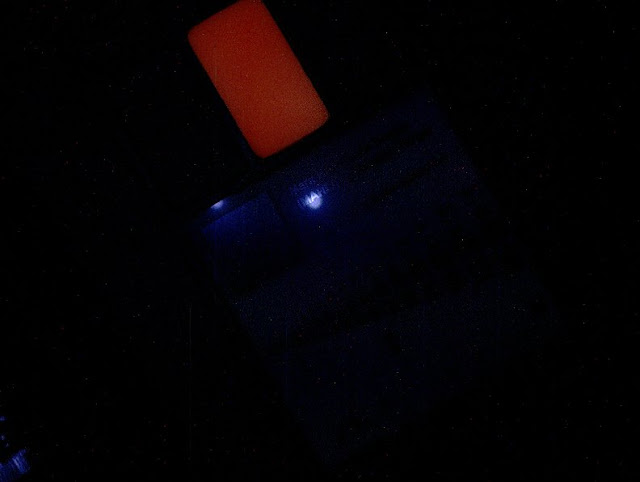NASA - Mars Science Laboratory (MSL) patch.
Jan. 25, 2013
This image of a Martian rock illuminated by white-light LEDs (light emitting diodes) is part of the first set of nighttime images taken by the Mars Hand Lens Imager (MAHLI) camera at the end of the robotic arm of NASA's Mars rover Curiosity. Image credit: NASA/JPL-Caltech/MSSS.
NASA's Mars rover Curiosity has for the first time used the camera on its arm to take photos at night, illuminated by white lights and ultraviolet lights on the instrument.
Scientists used the rover's Mars Hand Lens Imager (MAHLI) instrument for a close-up nighttime look at a rock target called "Sayunei," in an area where Curiosity's front-left wheel had scuffed the rock to provide fresh, dust-free materials to examine. The site is near where the rover team plans to begin using Curiosity to drill into a rock in coming weeks. The images of the rock Sayunei and of MAHLI's calibration target were taken on Jan. 22 (PST) and received on Earth Jan. 23.
This image of a Martian rock illuminated by ultraviolet LEDs (light emitting diodes) is part of the first set of nighttime images taken by the Mars Hand Lens Imager (MAHLI) camera at the end of the robotic arm of NASA's Mars rover Curiosity. Image credit: NASA/JPL-Caltech/MSSS.
The MAHLI, an adjustable-focus color camera, includes its own LED (light-emitting diode) illumination sources. Images of Sayunei taken with white-LED illumination and with illumination by ultraviolet LEDs are available online at: http://www.nasa.gov/mission_pages/msl/multimedia/pia16711.html and http://www.nasa.gov/mission_pages/msl/multimedia/pia16712.html .
"The purpose of acquiring observations under ultraviolet illumination was to look for fluorescent minerals," said MAHLI Principal Investigator Ken Edgett of Malin Space Science Systems, San Diego. "These data just arrived this morning. The science team is still assessing the observations. If something looked green, yellow, orange or red under the ultraviolet illumination, that'd be a more clear-cut indicator of fluorescence."
This image of a calibration target illuminated by ultraviolet LEDs (light emitting diodes) is part of the first set of nighttime images taken by the Mars Hand Lens Imager (MAHLI) camera at the end of the robotic arm of NASA's Mars rover Curiosity. Image credit: NASA/JPL-Caltech/MSSS.
This image of a calibration target illuminated by white-light LEDs (light emitting diodes) is part of the first set of nighttime images taken by the Mars Hand Lens Imager (MAHLI) camera at the end of the robotic arm of NASA's Mars rover Curiosity. The set includes images of the MAHLI calibration target and of a Martian rock target called "Sayunei." MAHLI took the images on Jan. 22, 2012 (PST), after dark on the 165th Martian day, or sol, of the rover's work on Mars.
For scale, the Lincoln penny on the MAHLI calibration target is three-fourths inch (19 millimeters) in diameter. The calibration target is mounted on the rover. This image was taken from a lens distance of 3.9 inches (10 centimeters). The illumination was MAHLI's four white-light LEDs. The reflection of one pair of LEDs is seen near the center of the image. The other pair is toward the center-left and is less visible because the surface there is less reflective. Image credit: NASA/JPL-Caltech/MSSS.
Mars Science Laboratory (MSL) "Curiosity". Image credit: NASA/JPL-Caltech
NASA's Mars Science Laboratory project is using Curiosity to investigate whether the study area within Gale Crater has offered environmental conditions favorable for microbial life. JPL, a division of the California Institute of Technology in Pasadena, manages the Mars Science Laboratory mission for the NASA Science Mission Directorate, Washington. For more information about the mission, visit http://www.nasa.gov/msl and http://mars.jpl.nasa.gov/msl .
Follow the mission on Facebook at http://www.facebook.com/marscuriosity and on Twitter at http://www.twitter.com/marscuriosity .
Images (mentioned), Text, Credits: NASA / JPL / Guy Webster.
Best regards, Orbiter.ch






